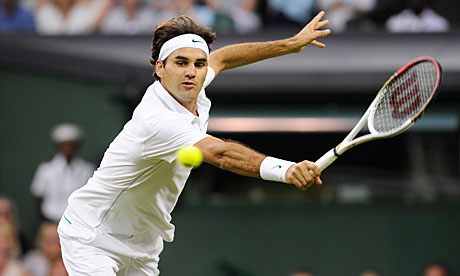
About Wimbledon 2012
At its Worple Road location, the grounds of the All England Club had been arranged to allow the main court to be positioned in its center, with the other courts surrounding that court which came to be aptly called the Centre Court. When the All England Club moved to its current Church Road location in 1922, however, the Centre Court's location was no longer literally central to the others, but nevertheless retained its original name. In 1980, the Centre Court's intended position was re-established when four new courts were added to the north of it on the grounds. The Wimbledon Championship's Centre Court has the distinction of being the smallest of all four Grand Slam tournament stadiums, the other three including the US Open, the Australian Open, and Roland Garros (French Open).

About Wimbledon 2013
There are a total of nineteen grass tennis courts at the All England Club, purely composed of rye grass, and significant measures are taken to maintain and protect those grass courts that are the treasure of the Wimbledon tournaments. In fact, the Centre Court, the most prestigious of all the Club's courts, may be used on one occasion each year, and that is during the two weeks of the Wimbledon Championships. Usually, it is this Court that hosts the finals and semifinals of the main events, in addition to earlier matches between the most notable or popular players expected to draw especially large crowds. The court is distinguished by the ivy that surrounds it as well as by two large fans positioned at each end of the court for quick drying in the frequent event of rain. At the south end of the Centre Court is the Royal Box, special seating for spectators from members of the Royal Family and other dignitaries. Courts No. 1 and No. 2 are also used for play during the Wimbledon Championships, with this time usually being the only occasion each year during which Court No. 1 is put to use as well. Exceptions are rare, but one such exception will include the 2012 Olympic Games, when the All England Club is scheduled to host the tennis events for the occasion. Aside from the Centre Court and Court No. 1, the remaining courts are used regularly throughout the year during events hosted by the All England Club.

About Wimbledon 2014
An enormous television screen sits at the northern end of the grounds for the broadcast of the Championship's most important matches, which fans may watch from a grassy area officially called the Aorangi Terrace, although the space has undergone frequent nicknaming over the years whenever well-performing British players attract numerous fans and the informal nicknaming of the grassy hill is dedicated in their honors by the press - such as "Rusedki Ridge" for Greg Rusedski in the nineties, and most recently "Murray Mound" or "Murrayfield" after Andy Murray, Britain's current number one tennis player in the nation, in spite of neither of them having acquired any Wimbledon titles.

About Wimbledon 2015
In 1979, the roof of the Centre Court's Stadium was raised a meter, yielding space to add 1,088 additional seats for spectators. In 1980, the All England Club rebuilt the Court No. 1 complex, making its North and South Stands larger and thus increasing the court's capacity by 1,250. In 1982, the Club's grounds extended to include Aoragni Park to provide even more space to utilize during the crowded Wimbledon championships. In 1985, the Club opened the Centre Court's East Side Building, which created an additional 800 spectator seats as well as more media commentary boxes. The same year, a new space was integrated for administrative staff, the Wimbledon Lawn Tennis Museum was redesigned, and the Tea Lawn was renovated. In 1986, the club built a two-story pavilion in Aoragni, Park, establishing even more spectator space. In 1992, the Centre Court received further renovations, resulting in the replacement of its roof by a structure supported by four pillars rather than the 26 which had supported the previous roof, yielding less obstruction and a more perfect view for the 3600 spectators the stadium held. In 1993, the All England Club introduced a Long Term Plan for gradual renovations that would end with the first decade of the new millennium. Of course the Centre Court is where the country's top sports award is presented.

About Wimbledon 2016
Since the All England Club introduced tennis among its activities, the Club has always undergone constant improvements and renovations to its grounds to grow ever more suitable for the players, officiators, spectators, and media of its growing sport. Changes are made to the grounds just about every year.

About Wimbledon 2017
The author of this article is 10 year veteran in the crystal awards and recognition gifts industry.









0 comments:
Post a Comment